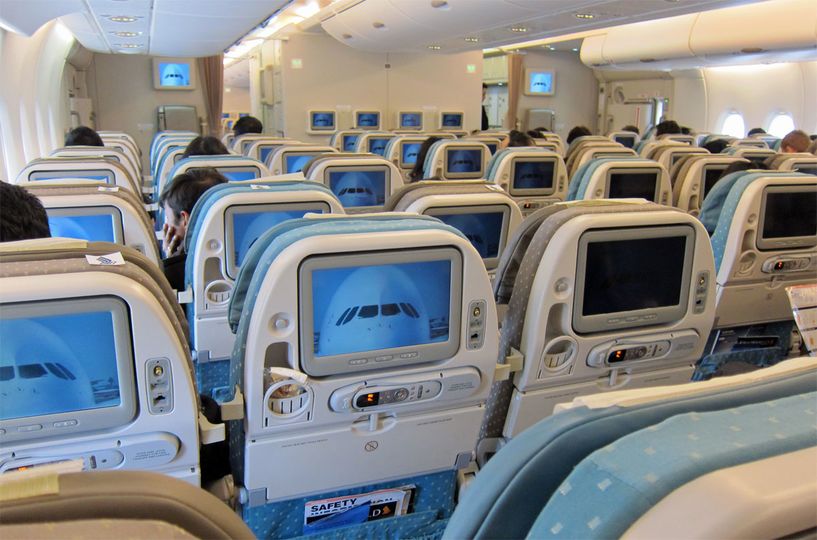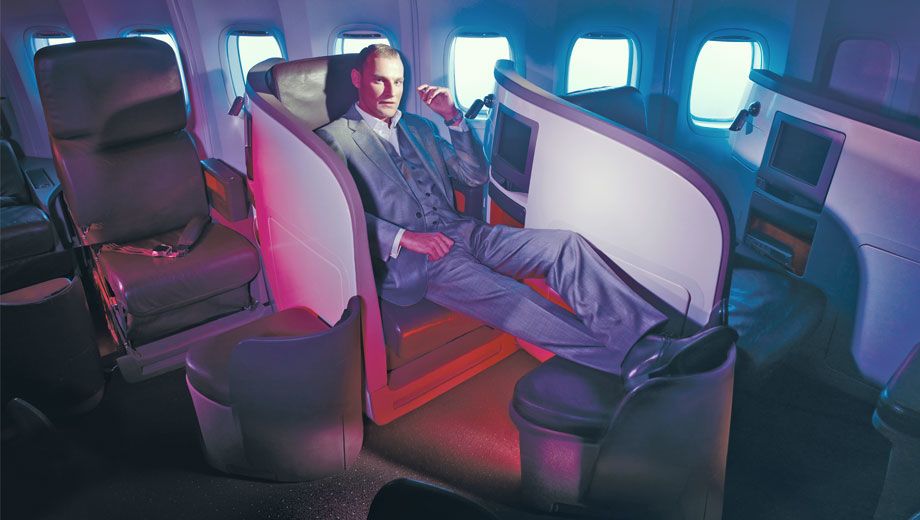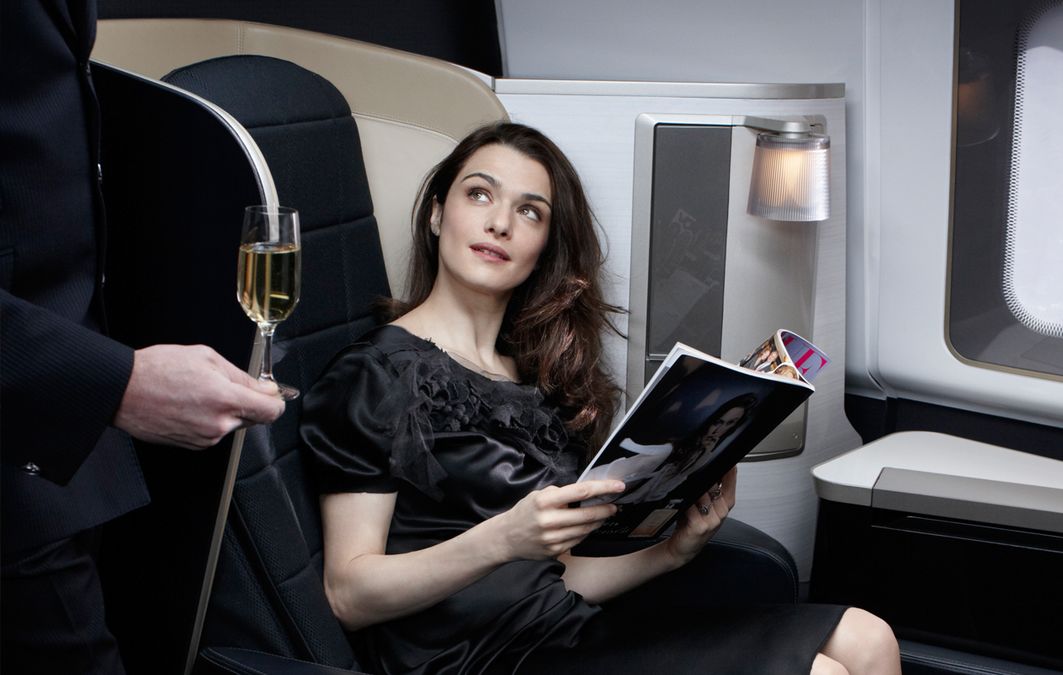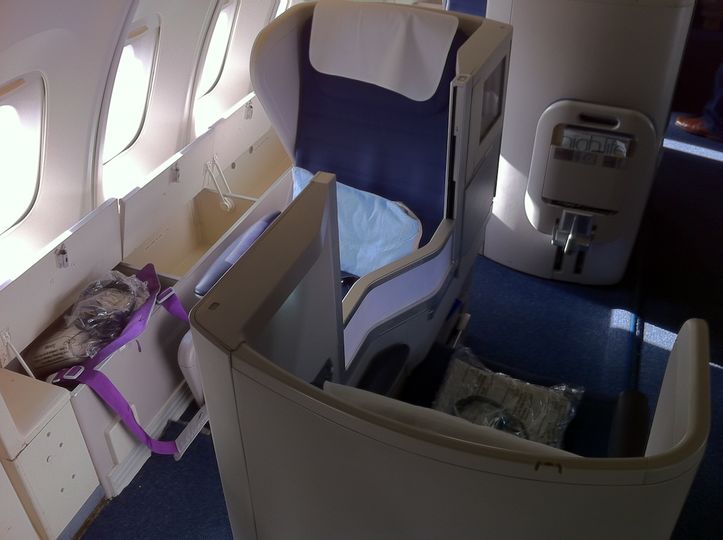It doesn't matter if your flight is a short one hour hop between cities or a long 20+ hour trek from one corner of the globe to another – a good seat is always welcome.
That's why Australian Business Traveller has built up our series of Best Seats guides with the notes you need to find the best seats and avoid the worst ones.
But for any airline and any plane, there are some general rules of thumb – or should that be 'rules of bum'? – to follow.
1. If you like it quiet, avoid the front or back of the cabin
Galley kitchens, lavatories and areas where passengers tend to congregate to have a stretch tend to be at the front and back of the cabins.
And bassinet crib positions for babies and families with young children are usually at the the front of each cabin – which means the back of a business class cabin might have babies in economy just the other side of a thin wall.
All of those factors combine to be pretty noisy, so if peace and quiet is important to you, pick a seat elsewhere.
Inflight bars and lounge areas also tend to be found towards the front and back of the cabin, so if you're not planning to imbibe then pick a seat as far away from them as possible.
2. If you want legroom, look for an exit row instead of a bulkhead
We'll steer you away from heading for the bulkhead if stretched-out legroom is more important to you than space for your knees.
The difference is that you can extend your feet underneath the seat in front of you, but not if there's a bulkhead wall ahead.
There's usually more space for your knees in the bulkhead, though – and, when space is tighter at the back of the plane, there's crucial space for your laptop too.
The emergency exit seats – where the rows of seats are spaced further apart for emergency access, and there's no bulkhead wall at all – are almost always the best for the seriously tall passenger.
However, the window seats at some emergency exit rows sometimes have less legroom than a standard economy seat if the emergency door sprouts a protruding bump, so an aisle seat can be the safest bet.
3. For extra elbow room, keep far away from the doors
This one's a bit of a gamble, especially on full flights.
If you'd like some extra elbow room and don't mind not being first off the plane, look for a seat that's down the back and well away from the doors (most travellers prefer to be closer to them) where there's a middle seat, such as in a 3-4-3 configuration.
Our rationale? You're banking that nobody will want the 'even worse' middle seat, so you'll have space to spread out your carry-on bag, papers and laptop.

The risk is that if the plane's full up you'll end up in a less-than-best seat and with a seatmate to boot.
But most planes have a few spare seats free, and the last to be filled tend to be middle seats at the very back if the plane only boards from the front, or three quarters back if the plane boards from both the front and rear doors.
(Extra tip: Frequent flyers often like to snag a seat in the last few rows on front-and-rear boarding flights since they can be first off.)
4. Aisle fan? Pick a seat in the centre section if there is one
On larger planes with two aisles, like a Boeing 747, Airbus 380 or A330 or similar – fans of aisle seats are better off picking a seat in the centre section if there's a choice.
(Naturally, this doesn't apply to business class seating where everyone has direct aisle access.)
Sitting in the centre section of those seats almost always means that you'll have fewer passengers picking their way over you than if you were sitting next to a window passenger, no matter whether you're in business or economy.
And sometimes -- like in Qantas' A380 business class below -- there's no middle seat in the centre section at all.
Even if you're on a plane where there are middle seats next to you, they're less desirable for other passengers than window seats – so they'll be the last filled, increasing the likelihood of a spare seat next to you.
5. Hunt down the smallest cabin on the plane
Again on those larger planes, check out whether there's a smaller cabin tucked away somewhere. Often, the plane's design and the airline's layout choice mean that there's a smaller cabin with just a few rows of seats – perfect for a quiet and productive flight.
On a Boeing 747, this often means the upper deck – usually business class, but sometimes economy or premium economy ends up there too, in a very comfortable layout.
Some Airbus A380 layouts have economy class upstairs, in a more spacious 2-4-2 layout rather than the 3-4-3 seen downstairs.
Virgin Australia's Boeing 777 planes (the ones heading to Los Angeles and Abu Dhabi) have a whole row of business class in its own separate little cabin – the exclusive Row 5.
So keep an eye on those seating layouts and see if there's a smaller cabin you can pick.
Bonus tip: keep checking back, especially 7, 3 and 1 days before departure
If you don't like the seat you can pick at check-in, make sure you keep checking back periodically. (Try setting a calendar appointment to remind you, noting down the six-digit PNR booking reference number in the appointment so you have it to hand.)
Often, airlines will keep back the very best seats for their most frequent flyers to start with, and those seats will then be released back into the general pool as it gets closer to your departure.
And other passengers who have snagged your favourite seat might have changed flight, been upgraded or swapped places.

Particularly useful times to check back are seven days, three days and twenty-four hours before your departure. Those tend to be the times that airlines most frequently shift around the seats they might have been keeping back.
Share your tips and tricks...
What's your strategy for snagging the best seat on the plane – or for avoiding the worst? Share your frequent flyer knowledge with fellow AusBT readers in a comment below!
More top articles from Australian Business Traveller:
- When does a lie-flat business class bed not actually lie flat? We put the truth to the lie-flat lie
- Jargonbusted: leg room, seat pitch & your 'personal space' on an aircraft
- Bulkhead or emergency exit seats: which really gives you extra legroom on a plane?
Get the latest news for business travellers and frequent flyers – tune into @AusBT on Twitter!






25 Apr 2013
Total posts 1
Great article, other trick is to use seatguru.com where we can check the best seats.
QFF
06 Nov 2012
Total posts 46
When checking to see if superior seats have been released, also confirm that the aircraft type is unchanged. An excellent seat on a Boeing might be a dog on an Airbus (and vice versa).
Also check that the airline hasn't reallocated your carefully chosen seat - this happened to me when Qatar grounded the 787 - they messed around with the J seat allocations in the 777 a couple of times and I had to keep correcting it.
Qantas - Qantas Frequent Flyer
29 Jan 2013
Total posts 3
One tip I have found for elbow room when I am in economy on the 747 is rows 71 through 74 have a gap between the window and the seat allowing for extra storage and elbow room.
Va
30 Apr 2013
Total posts 1
Be careful when requesting exit rows. Some times you get the extra leg room, at the expense of a seat that does not recline. This is the case on some of Virgin Australia's 737s as one of the exit rows is locked in the upright position.
Qantas - Qantas Frequent Flyer
08 Dec 2010
Total posts 11
Don't forget to check for those "magic" economy seats on A380 lower decks, where there's an empty seat in front of you for the escape hatch for the crew's rest below deck. I think it's 71D and 80K on Qantas that have this fantastic extra legroom.
Air New Zealand - Airpoints
04 Sep 2012
Total posts 136
Also, I use my status alot. When travelling transtasman on Air New Zealand, they let the Airpoints, Velocity, Flying Club and Star Alliance gold members sit in their premium economy section for free...this is a bonus for people like me whose company only let me fly business long haul not short/domestic
Hi Guest, join in the discussion on Five tips for picking the best seats for your flight